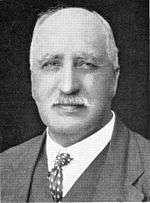South African Class 12B 4-8-2
|
Class 12R no. 1931 at Port Elizabeth sheds, with Belpaire firebox, c. 1945 | |||||||||||||||||||||||||||||||||||||||||||||||||||||||||||||||||||||||||||||||||||||||||||||||||||||||||||||||||
| |||||||||||||||||||||||||||||||||||||||||||||||||||||||||||||||||||||||||||||||||||||||||||||||||||||||||||||||||
| |||||||||||||||||||||||||||||||||||||||||||||||||||||||||||||||||||||||||||||||||||||||||||||||||||||||||||||||||
| |||||||||||||||||||||||||||||||||||||||||||||||||||||||||||||||||||||||||||||||||||||||||||||||||||||||||||||||||
| |||||||||||||||||||||||||||||||||||||||||||||||||||||||||||||||||||||||||||||||||||||||||||||||||||||||||||||||||
| The leading coupled axle had flangeless wheels | |||||||||||||||||||||||||||||||||||||||||||||||||||||||||||||||||||||||||||||||||||||||||||||||||||||||||||||||||
The South African Railways Class 12B 4-8-2 of 1920 was a steam locomotive.
In 1920, the South African Railways placed thirty Class 12B steam locomotives with a 4-8-2 Mountain type wheel arrangement in service.[1][2]
Manufacturer
In May 1920, an additional thirty locomotives, built to the Class 12 design of SAR Chief Mechanical Engineer (CME) D.A. Hendrie, were delivered to the South African Railways (SAR) from Baldwin Locomotive Works in the United States of America. Most of them were erected in the SAR workshops, but a few were contracted to James Brown and Company at Durban for erection. Even though they were very similar to the second and subsequent orders of the Class 12, they were classified separately as Class 12B and numbered in the range from 1931 to 1960. They were also built with plate frames, Walschaerts valve gear and Belpaire fireboxes.[1][2][3]
Classification

The separate classification has been ascribed to the fact that the wheelbase of the leading bogie was 2 inches (51 millimetres) longer than on the original Class 12 locomotives. This was probably not the reason, bearing in mind that only the first eight out of altogether 46 Class 12 locomotives were built with leading bogies with a 6 feet (1,829 millimetres) wheelbase, while the other thirty-eight all had leading bogies with a 6 feet 2 inches (1,880 millimetres) wheelbase, the same as the Class 12B. More likely, the separate classification was simply based on the fact that the Class 12 was British-built while the Class 12B was American-built.[1][2][3]
Watson Standard boilers
During the 1930s, many serving locomotives were reboilered with a standard boiler type, designed by then CME A.G. Watson as part of his standardisation policy. Such Watson Standard reboilered locomotives were reclassified by adding an "R" suffix to their classification.[2][4][5]
All thirty Class 12B locomotives were eventually reboilered with Watson Standard no. 2 boilers. In the process, they were also equipped with Watson cabs, with their distinctive slanted fronts, compared to the conventional vertical fronts of their original cabs. Upon reboilering, the original reason for the separate classification was ignored and, instead of becoming Class 12BR, the reboilered locomotives were reclassified to Class 12R along with the reboilered Class 12 locomotives.[1][4][5][6]
Their original Belpaire boilers were fitted with Ramsbottom safety valves, while the Watson Standard boiler was fitted with Pop safety valves. Other obvious differences between an original and a Watson Standard reboilered locomotive are usually a rectangular regulator cover, just to the rear of the chimney on the reboilered locomotive and, in the case of the Classes 12B and 12R locomotives, the Watson cab and the absence of the Belpaire firebox hump between the cab and boiler on the reboilered locomotives.[4][5]
Service
South African Railways
They were placed in service on the Cape Midland, working on the mainline out of Port Elizabeth, where they largely remained until being withdrawn from service. Even though they were not designed to be mixed traffic locomotives, they saw service on both passenger and goods working.[2][3]
Industrial
For some reason, few Class 12Rs ended up in industrial service, despite their evident suitability for such work. Of the ex Class 12B locomotives, only no. 1936 was sold to Enyati Colliery and later became Western Holdings Gold Mine's no. 8.[6]
Works numbers
The Baldwin works numbers did not run consecutively for the whole order and are shown in the table.[2][3]
| SAR no. | Works no. |
|---|---|
| 1931 | 52476 |
| 1932 | 52558 |
| 1933 | 52559 |
| 1934 | 52583 |
| 1935 | 52584 |
| 1936 | 52649 |
| 1937 | 52650 |
| 1938 | 52651 |
| 1939 | 52690 |
| 1940 | 52691 |
| 1941 | 52692 |
| 1942 | 52693 |
| 1943 | 52712 |
| 1944 | 52713 |
| 1945 | 52723 |
| 1946 | 52724 |
| 1947 | 52754 |
| 1948 | 52755 |
| 1949 | 52756 |
| 1950 | 52757 |
| 1951 | 52758 |
| 1952 | 52759 |
| 1953 | 52760 |
| 1954 | 52761 |
| 1955 | 52762 |
| 1956 | 52763 |
| 1957 | 52764 |
| 1958 | 52765 |
| 1959 | 52766 |
| 1960 | 52767 |
Illustration
The main picture shows Class 12B no. 1931 at the Port Elizabeth sheds on 31 March 1979.
 12R no. 1939 at New Brighton, 31 March 1979
12R no. 1939 at New Brighton, 31 March 1979
References
- 1 2 3 4 Espitalier, T.J.; Day, W.A.J. (1945). The Locomotive in South Africa - A Brief History of Railway Development. Chapter VII - South African Railways (Continued). South African Railways and Harbours Magazine, October 1945. p. 780.
- 1 2 3 4 5 6 Paxton, Leith; Bourne, David (1985). Locomotives of the South African Railways (1st ed.). Cape Town: Struik. pp. 10–11, 54–56. ISBN 0869772112.
- 1 2 3 4 Holland, D.F. (1972). Steam Locomotives of the South African Railways, Volume 2: 1910-1955 (1st ed.). Newton Abbott, Devon: David & Charles. pp. 38–41, 82. ISBN 978-0-7153-5427-8.
- 1 2 3 South African Railways & Harbours/Suid Afrikaanse Spoorweë en Hawens (15 Aug 1941). Locomotive Diagram Book/Lokomotiefdiagramboek, 3'6" Gauge/Spoorwydte. SAR/SAS Mechanical Department/Werktuigkundige Dept. Drawing Office/Tekenkantoor, Pretoria. p. 43.
- 1 2 3 South African Railways & Harbours/Suid Afrikaanse Spoorweë en Hawens (15 Aug 1941). Locomotive Diagram Book/Lokomotiefdiagramboek, 2'0" & 3'6" Gauge/Spoorwydte, Steam Locomotives/Stoomlokomotiewe. SAR/SAS Mechanical Department/Werktuigkundige Dept. Drawing Office/Tekenkantoor, Pretoria. pp. 6a-7a, 41, 43.
- 1 2 Durrant, A E (1989). Twilight of South African Steam (1st ed.). Newton Abbott, London: David & Charles. p. 59. ISBN 0715386387.
| Wikimedia Commons has media related to South African Class 12B (4-8-2). |
